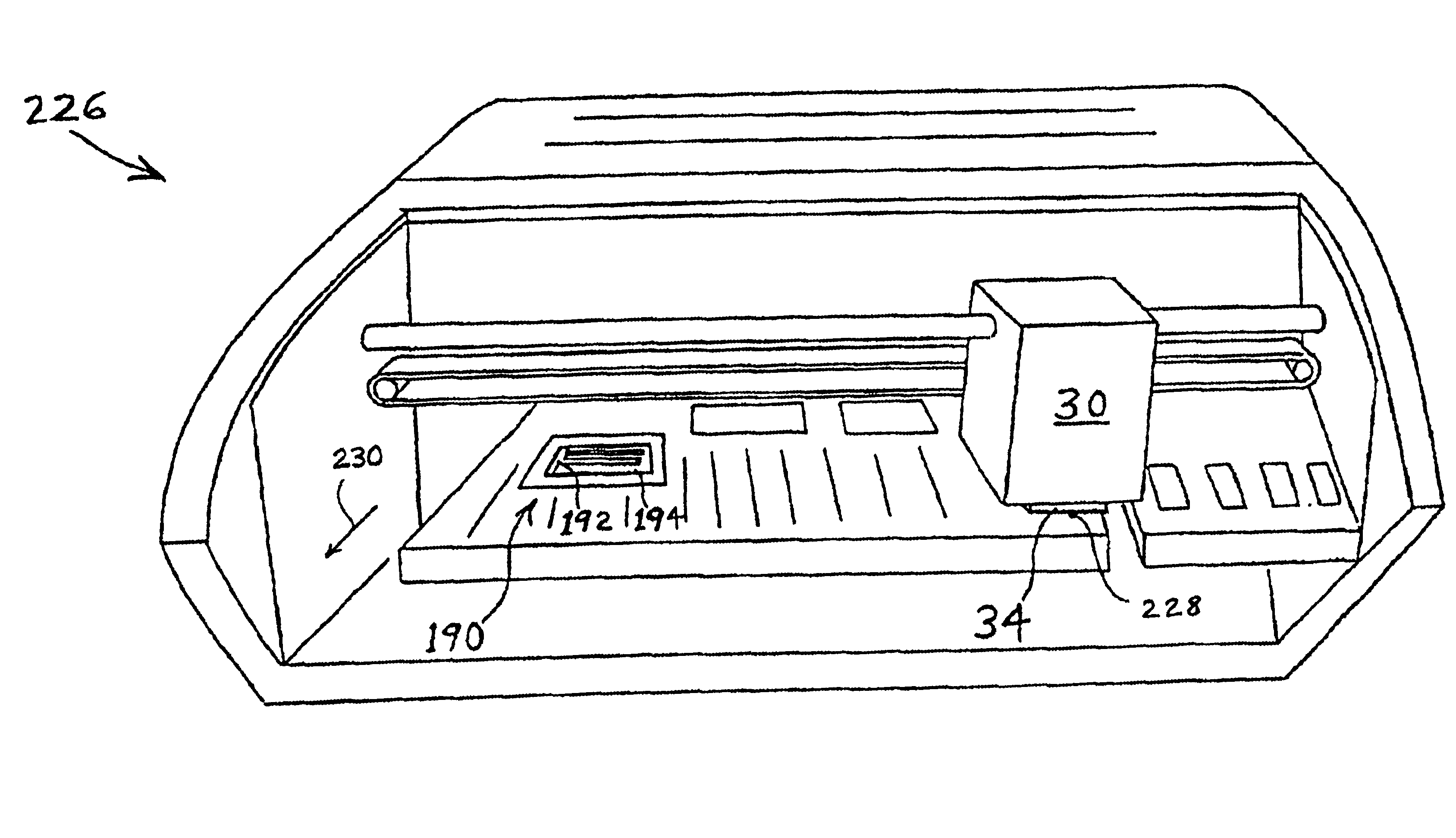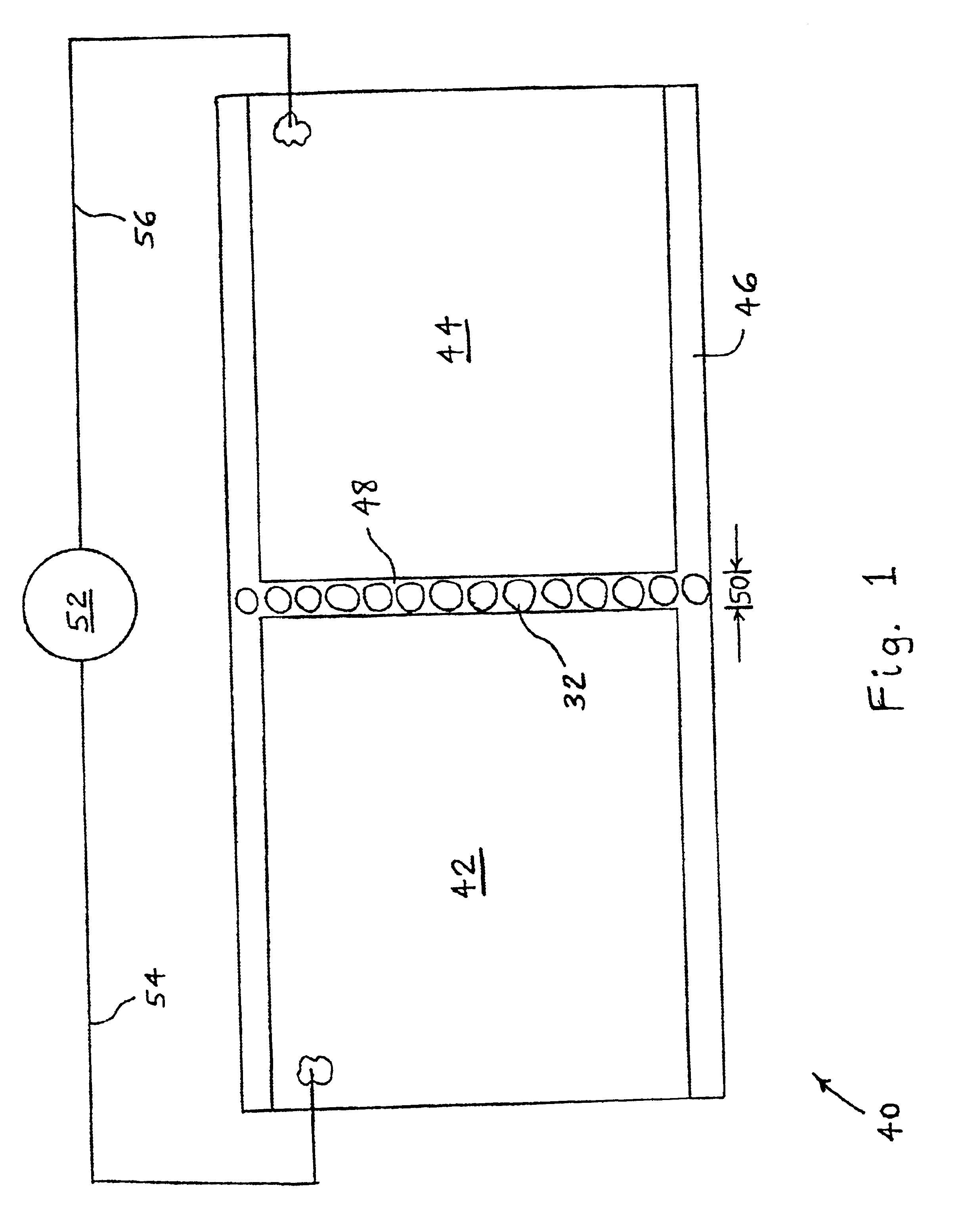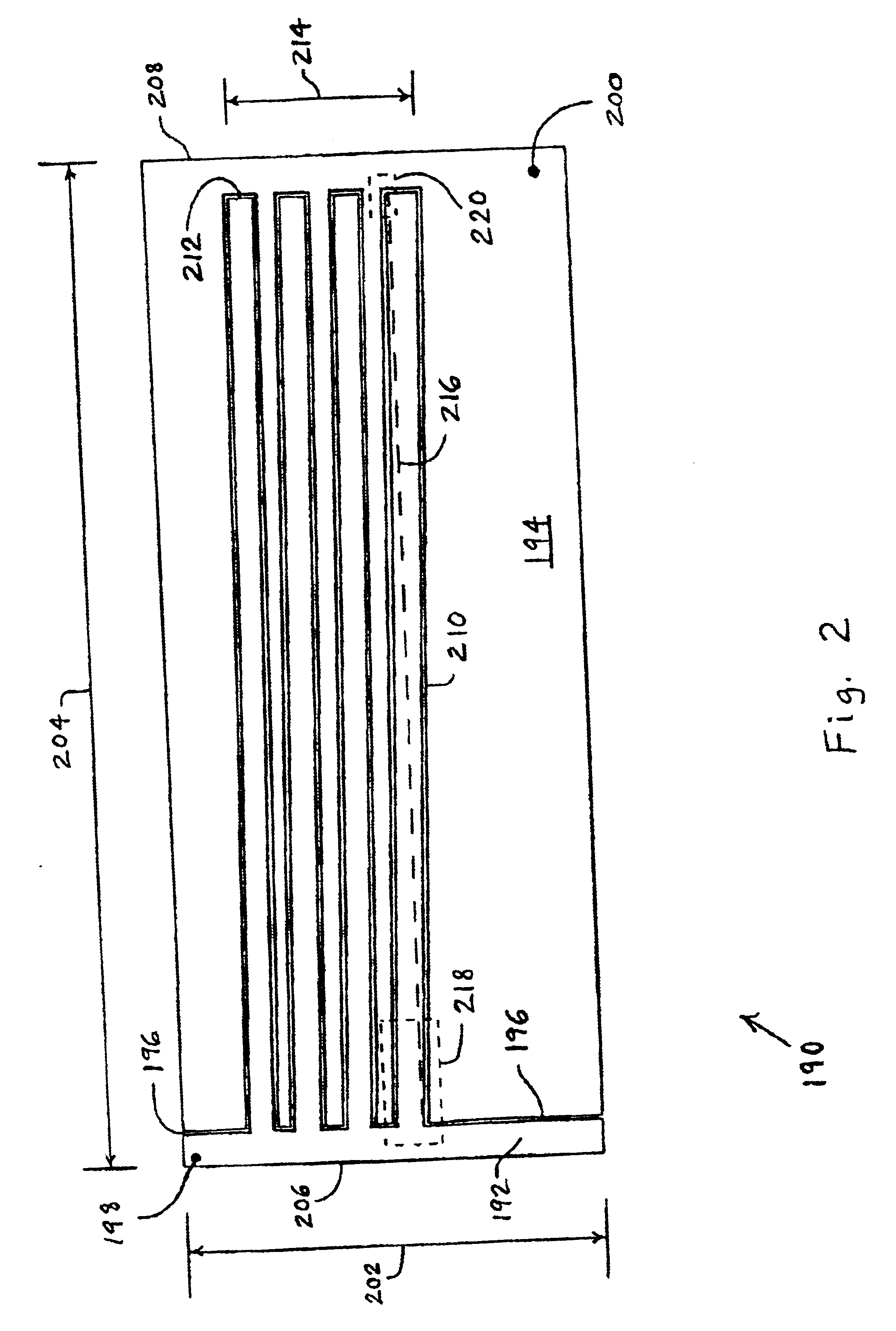Missing nozzle detection method and sensor for an ink jet printer
a detection method and sensor technology, applied in the field of ink jet printers, can solve the problems of easy clogging of the nozzle easy clogging of the ink jet printhead, etc., and achieve the effects of low cost, less cost of the sensor, and high quality perception
- Summary
- Abstract
- Description
- Claims
- Application Information
AI Technical Summary
Benefits of technology
Problems solved by technology
Method used
Image
Examples
Embodiment Construction
Referring now to the drawings and particularly to FIG. 1, there is shown one embodiment of a slotted sensor 40 of the present invention, including two copper terminals 42, 44 on a mylar substrate 46. Terminals 42, 44 are separated by a gap 48 having a width 50 of approximately between {fraction (1 / 1200)}-inch and {fraction (1 / 600)}-inch, which is approximately the width of an ink droplet 32. Gap 48 can be formed by laser cutting. An ohmmeter 52 has leads 54, 56 connected to terminals 42, 44, respectively, to measure the resistance therebetween. When no ink drops 32 are between terminals 42 and 44, the resistance between terminals 42 and 44 is many hundreds of megohms. If a single column of ink drop 32 is printed from a printhead into gap 48, as illustrated in FIG. 1, the resistance between terminals 42, 44 drops into the range of approximately between 0.5 and 3 megohms. Printing this column of ink drops 32 even one print element (pel) off-center of gap 48 leaves the resistance betwe...
PUM
 Login to View More
Login to View More Abstract
Description
Claims
Application Information
 Login to View More
Login to View More - R&D
- Intellectual Property
- Life Sciences
- Materials
- Tech Scout
- Unparalleled Data Quality
- Higher Quality Content
- 60% Fewer Hallucinations
Browse by: Latest US Patents, China's latest patents, Technical Efficacy Thesaurus, Application Domain, Technology Topic, Popular Technical Reports.
© 2025 PatSnap. All rights reserved.Legal|Privacy policy|Modern Slavery Act Transparency Statement|Sitemap|About US| Contact US: help@patsnap.com



